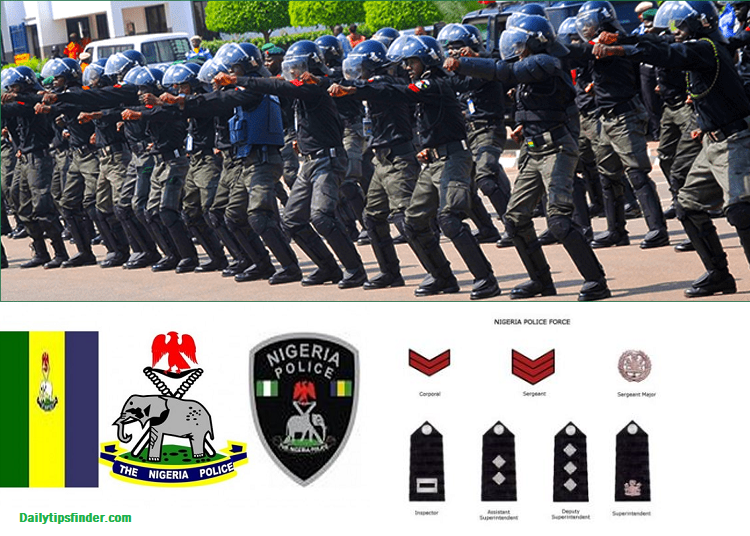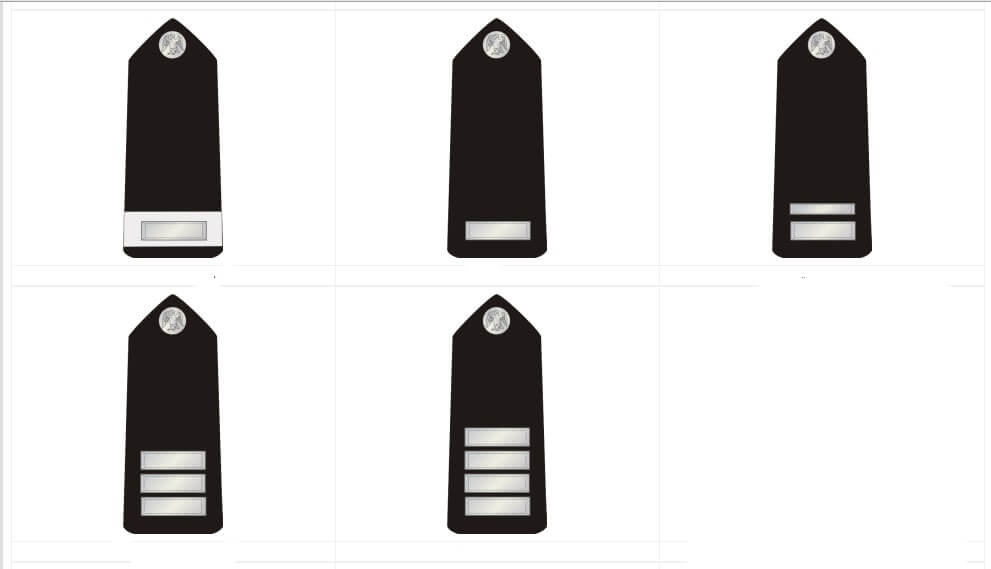Nigeria Police Ranks: A Complete Guide
What does it take to navigate the labyrinthine structure of the Nigerian Police Force? Understanding the ranks, responsibilities, and historical evolution of the NPF is crucial for comprehending its role in Nigeria's security landscape. From the entry-level recruit constable to the esteemed Inspector General of Police, each rank represents a specific level of authority and duty within this complex organization. This exploration delves into the intricate hierarchy of the NPF, tracing its development from colonial times to the present day, and examining the distinct roles played by officers at each level.
The Nigerian Police Force, a vital component of Nigerias security apparatus, operates under a meticulously structured hierarchy. This system, designed to ensure efficiency and accountability, dictates the flow of authority and responsibility within the force. The ranking system not only delineates roles and powers but also reflects the historical evolution of the NPF, tracing its origins back to the colonial era. The evolution of the NPF's ranking structure mirrors the broader changes in Nigeria's socio-political landscape, reflecting shifts in power dynamics and security priorities. From its inception as a regional security force to its current form as a national body, the NPF has adapted and restructured to meet the ever-evolving security needs of the nation. Understanding this intricate ranking system is key to grasping the complex workings of the NPF.
| Rank | Description | Responsibilities | Insignia |
|---|---|---|---|
| Inspector General of Police (IGP) | The highest rank in the NPF. | Leads the entire force, sets national policing strategy, and reports to the President. | - |
| Deputy Inspector General of Police (DIG) | Second-highest rank, assists the IGP. | Oversees specific departments and regions, deputizes for the IGP when necessary. | - |
| Assistant Inspector General of Police (AIG) | Heads zonal commands. | Manages policing operations within their respective zones, reports to the DIG. | - |
| Commissioner of Police (CP) | Commands state police formations. | Responsible for law enforcement within a state, reports to the AIG. | - |
| Deputy Commissioner of Police (DCP) | Supports the CP in state commands. | Oversees specific departments or areas within a state, reports to the CP. | - |
| Assistant Commissioner of Police (ACP) | Heads area commands or divisions. | Manages policing activities within their assigned area, reports to the DCP. | - |
| Chief Superintendent of Police (CSP) | Leads divisional police stations. | Responsible for day-to-day policing operations within a division, reports to the ACP. | - |
| Superintendent of Police (SP) | Supervises operational units within a division. | Manages specific units like crime investigation, traffic, etc., reports to the CSP. | - |
| Deputy Superintendent of Police (DSP) | Assists the SP in unit management. | Supports the SP in operational duties, reports to the SP. | Three vertically arranged stars |
| Assistant Superintendent of Police (ASP) | Field-level supervisory role. | Leads teams of inspectors and sergeants, reports to the DSP. | Two vertically arranged stars |
| Inspector | First-line supervisory rank. | Supervises constables and ensures patrol efficiency, reports to the ASP. | - |
| Sergeant | Field-level leadership role. | Leads small teams of constables, reports to the Inspector. | Three chevrons |
| Corporal | Experienced constable with additional responsibilities. | Assists sergeants in leading constables, reports to the Sergeant. | Two chevrons |
| Constable | Entry-level rank, performs basic policing duties. | Conducts patrols, responds to calls, carries out investigations under supervision. | One chevron |
| Recruit Constable | Individuals undergoing training. | Undergoing training at police academies. | - |
Nigerian Police Force Official Website
The NPF's ranking system is not merely a hierarchical structure but a dynamic framework that governs the force's operations. The distinct roles and responsibilities associated with each rank ensure a clear chain of command and facilitate the smooth execution of policing duties, from investigating complex crimes to conducting routine patrols. The system, much like that of the United Kingdom, emphasizes a pyramid structure for efficient management and control. This hierarchal system allows for effective distribution of responsibilities, streamlined communication, and clear lines of accountability. The career progression within the NPF offers a path for officers to ascend the ranks, gaining experience and expertise at each level. This incentivizes dedication and promotes a culture of professionalism within the force. The system is also designed to accommodate specialization, with various departments and units catering to specific areas of law enforcement, such as criminal investigation, traffic management, and counter-terrorism.
The history of the NPF is a fascinating journey through Nigeria's evolving security landscape. From its origins as a colonial constabulary to its present-day form, the NPF has undergone significant transformations, adapting to the changing needs of a rapidly developing nation. The force's early years were marked by a simple rank structure, reflecting the less complex security challenges of the pre-independence era. However, with the advent of independence in 1960 and the subsequent rise in security concerns, the NPF's rank structure evolved, becoming more intricate and specialized. The 1999 constitution further solidified the NPF's role as the primary law enforcement agency, granting it full authority across the nation. This constitutional mandate underscored the importance of a well-defined and robust ranking system to ensure the effective and accountable execution of the NPF's duties. This historical perspective is essential to fully appreciate the complex tapestry of ranks, roles, and responsibilities that constitute the modern Nigerian Police Force.
Understanding the NPFs structure is crucial not only for those within the force but also for the public it serves. Knowing the ranks and their associated responsibilities fosters transparency and accountability, enhancing public trust and facilitating more effective community policing. The NPF's rank structure, a complex tapestry woven through history and shaped by evolving security demands, plays a vital role in maintaining law and order in Nigeria. It provides a framework for efficient operation, ensures clear lines of command, and facilitates the professional development of officers. From the recruit constable at the beginning of their journey to the Inspector General at the helm, each rank contributes to the overall functioning of this critical institution, safeguarding the nation and its citizens.



Detail Author:
- Name : Matilde Lubowitz
- Email : crist.kyla@yahoo.com
- Birthdate : 1982-06-21
- Address : 937 Jacklyn Parkways South Deloresborough, MT 73354-9872
- Phone : +1-401-392-5416
- Company : Sanford, Streich and Buckridge
- Job : Mechanical Door Repairer
- Bio : Pariatur est facilis et rerum. Soluta quibusdam ut numquam adipisci. Non cum rem et. Labore quia molestias dolores perferendis ipsum et autem.